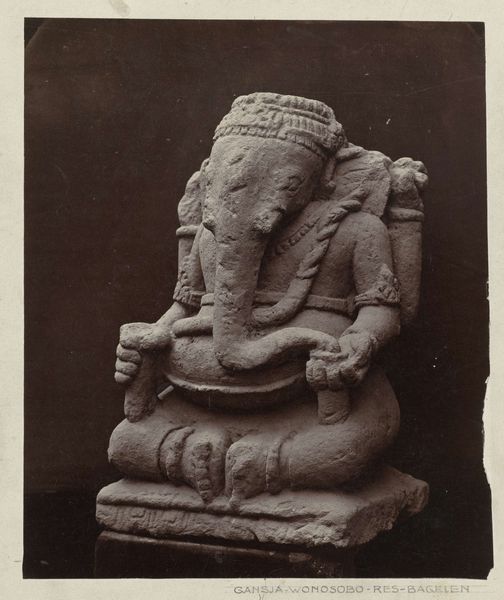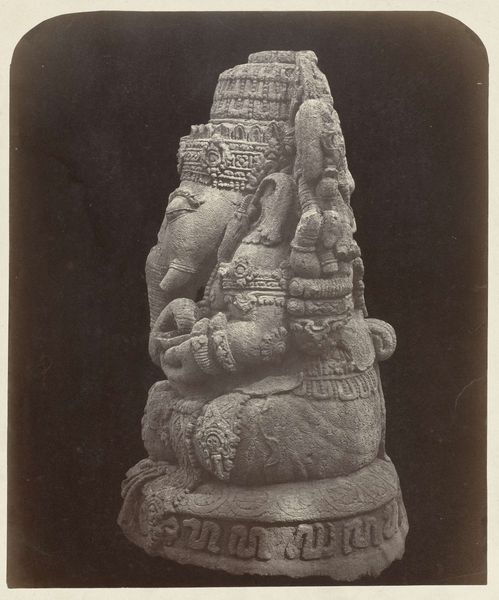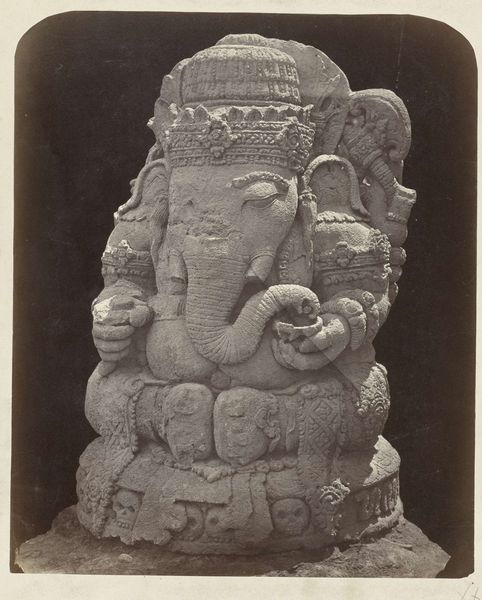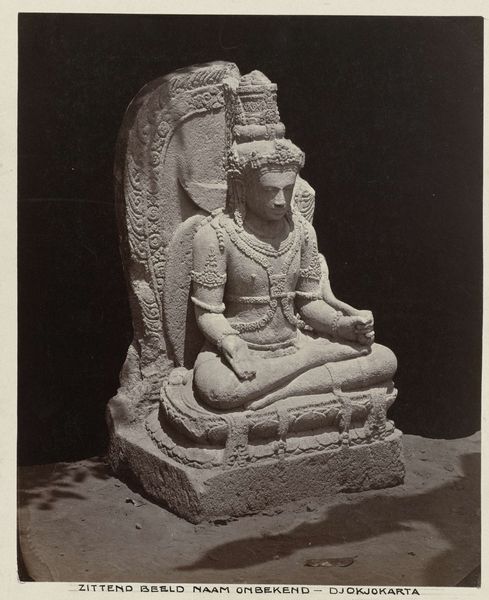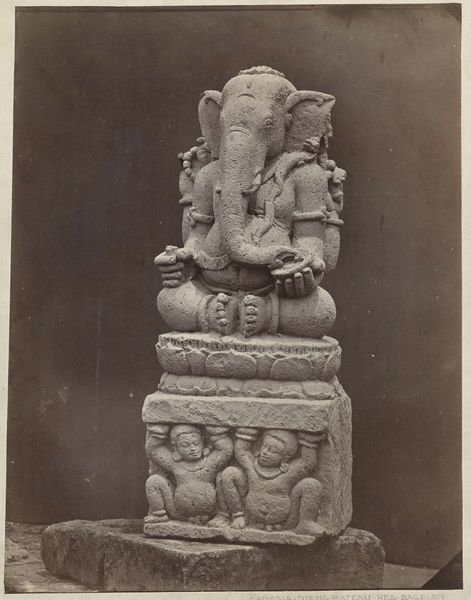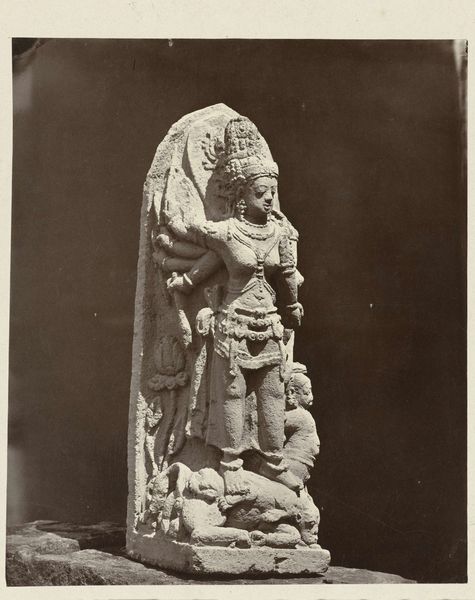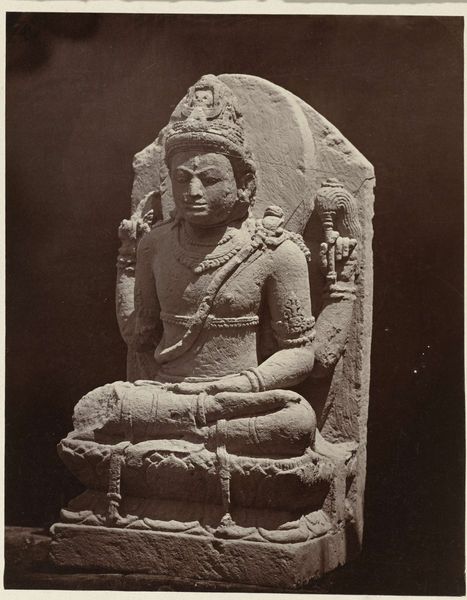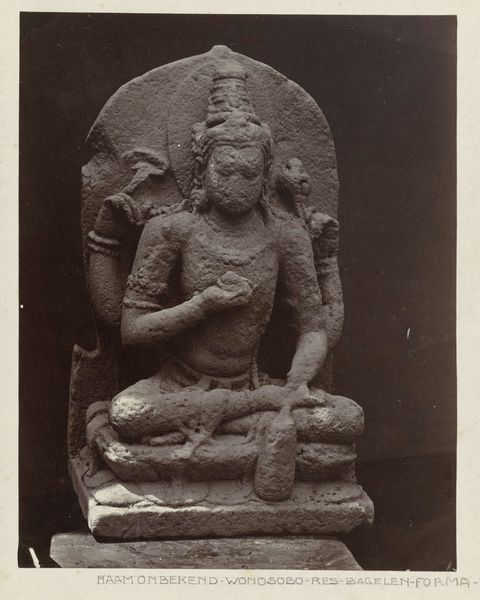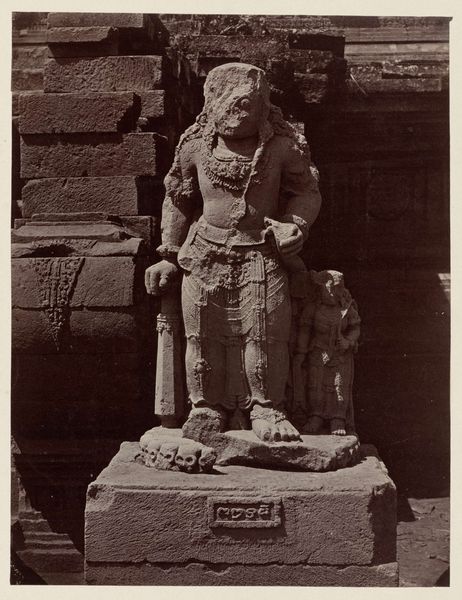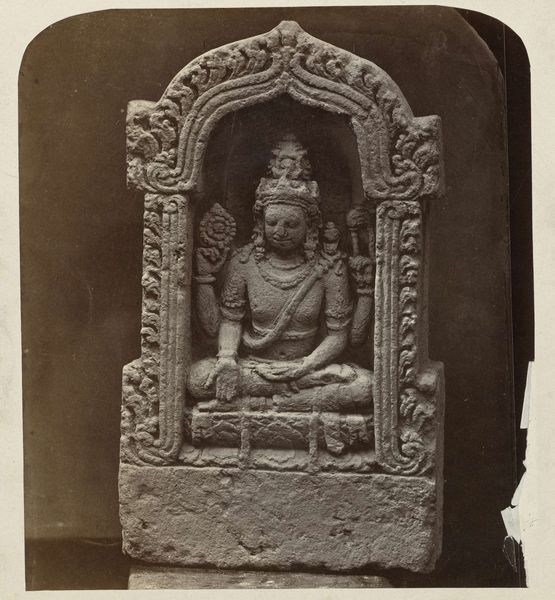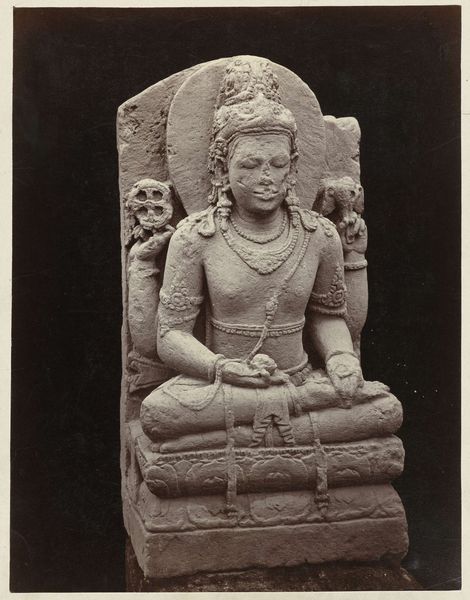
Four armed Ganesha exhibited in the garden of the assistent-resident of Wonosobo (provenance Dieng plateau). Wonosobo, Wonosobo district, Central Java province, 10th century. 1864 - 1868
0:00
0:00
photography, sculpture
#
sculpture
#
asian-art
#
photography
#
sculpture
#
19th century
#
statue
Dimensions: height 260 mm, width 210 mm
Copyright: Rijks Museum: Open Domain
Curator: This photograph by Isidore Kinsbergen, dating back to the period of 1864-1868, presents a 10th-century sculpture: a four-armed Ganesha originally from the Dieng Plateau in Central Java. It captures the deity as it was displayed in the garden of the Assistant-Resident of Wonosobo. Editor: The monochrome immediately gives a sense of antiquity. I'm drawn to the stark contrast and how it accentuates the textures of the stone. It really emphasizes the material's roughness and age. Curator: Indeed. Kinsbergen's choice of photography offers a lens to examine not only the sculptural form itself—the rounded belly, the iconic elephant head—but also its colonial context. Note the setting: removed from its original sacred space and placed within a colonial official's garden. Editor: That displacement speaks volumes about power dynamics. I am struck by how the materiality of the sculpture must have factored into its transport—the labour involved in extraction and relocation—all underpinned by colonial objectives. Curator: Absolutely. The Ganesha retains its inherent symbolism—a remover of obstacles, a god of beginnings. Kinsbergen's photographic composition enhances its iconic value through shadow and form. He invites us to contemplate its original function and its present display. Consider the gaze Kinsbergen directs; we become active viewers through the lens of colonialism, contemplating cultural significance subjected to western observation. Editor: And in terms of making—the rough hewn texture suggests an economy of technique perhaps, where the intention wasn't polish, so much as the potent symbolism enshrined in raw material. Perhaps reflecting local knowledge and the immediate environment? Curator: Possibly. It urges contemplation on Ganesha's multi-layered context—spiritual, cultural, colonial—inviting discussions beyond aesthetics and delving into art as historical artifact. Editor: For me, I am interested in thinking through the sculptor’s process itself—understanding that material engagement that forged cultural meaning into a tangible form. Curator: Very well observed. Editor: Agreed! Thank you.
Comments
No comments
Be the first to comment and join the conversation on the ultimate creative platform.
